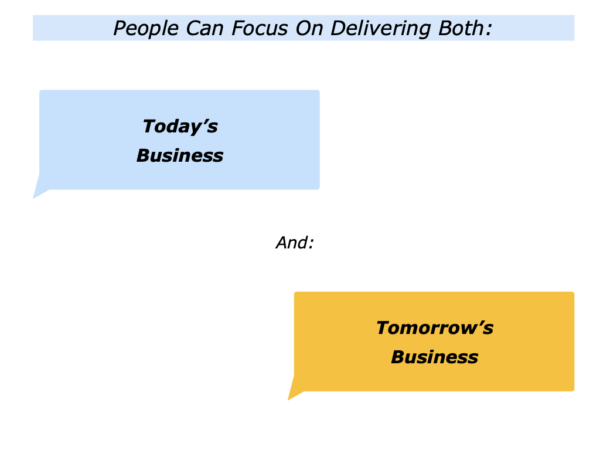
Imagine that you lead a team. There are many ways to encourage your people to deliver success. One approach is to involve them in focusing on how to deliver today’s business and tomorrow’s business.
The leader of one team I worked with invited their people to do exercises on these themes. The following section describes how to implement this approach. You would, of course, adapt this in your own way.
The leader began by setting the scene before inviting people to focus on these themes. Here is a summary of what they said when introducing the session.
Today’s Business And
Tomorrow’s Business
Today I would like to involve you in producing suggestions we can follow to deliver today’s business and also develop tomorrow’s business. This can help us to shape a positive future.
Before we do that, here is a reminder of the team’s picture of success. This gives you a picture of: a) the team’s goals; b) the benefits; c) the strategies we aim to follow; d) the things we have achieved so far this year.
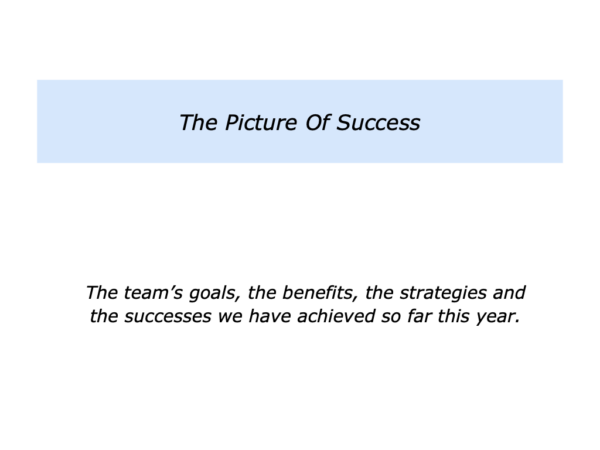
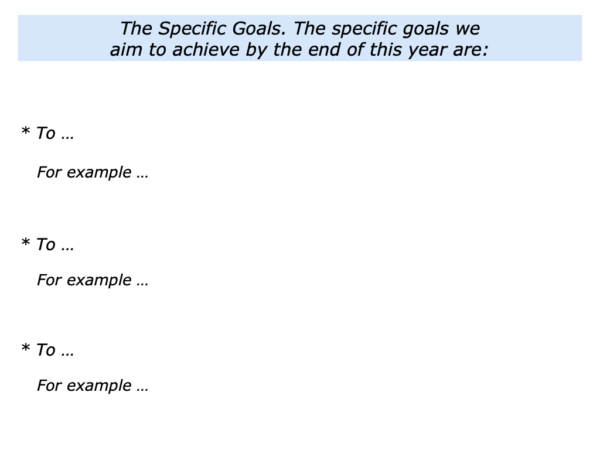
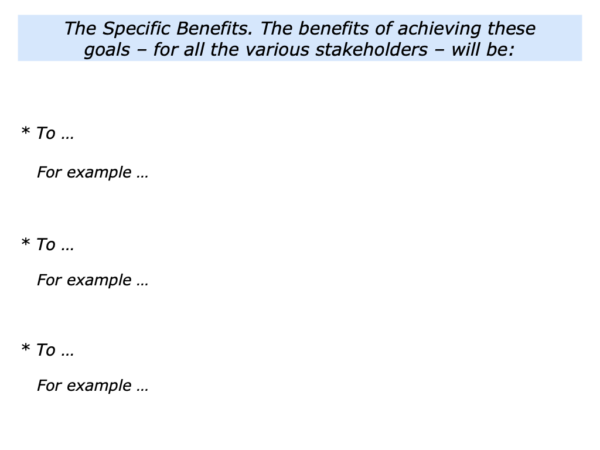
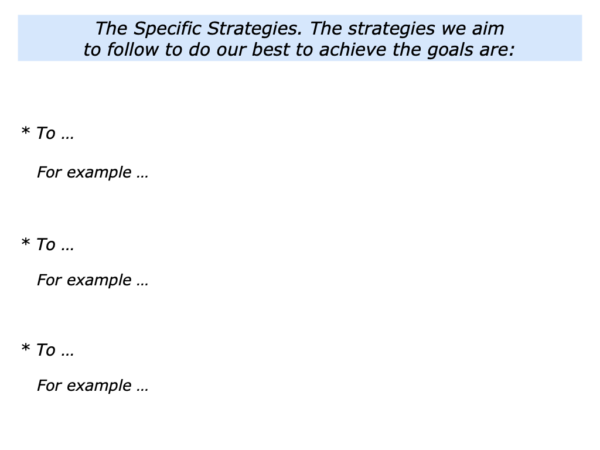
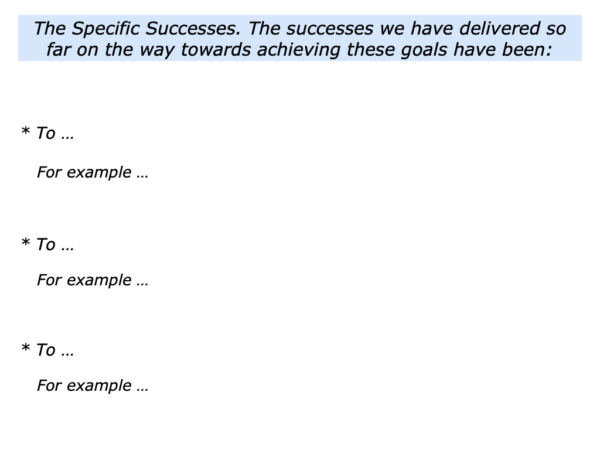
Let’s focus on the future. As you know, we need to keep delivering superb work to keep delivering today’s business. This includes practical steps we can take:
To keep building on our strengths, tackling areas for improvement and following our strategies for achieving the goals;
To keep doing superb work, encouraging each other and providing great service to both our external and internal customers;
To keep delivering today’s business, developing tomorrow’s business and doing our best to achieve ongoing success.
Let’s move on to the exercises. These focus on the following areas.
Today’s Business
I want one group of people to brainstorm and then produce practical suggestions we can follow: a) to keep delivering today’s business; b) to maybe get even more work from these customers. Here is the exercise.
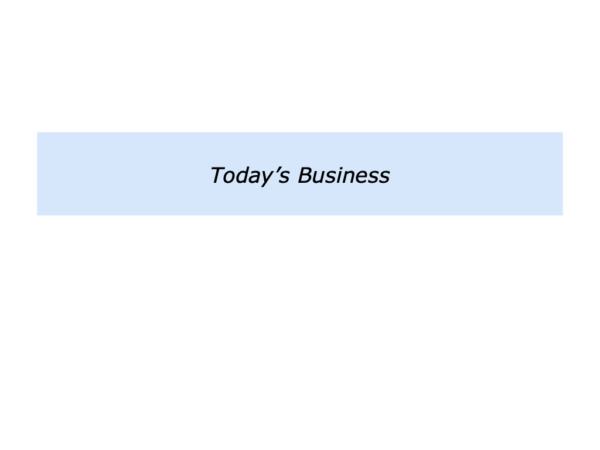
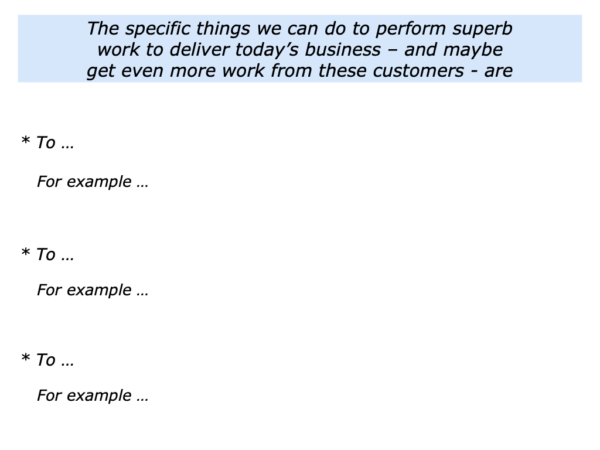
Tomorrow’s Business
As you know, it is vital for us to be proactive to develop and then deliver tomorrow’s business. This includes practical steps we can take:
To continue working with our pacesetting customers – those who ahead of the game in their chosen field;
To create services and products that will help them and other customers to tackle their future challenges successfully;
To keep building a team where we play to our strengths, encourage each other and shape a successful future.
I want one group of people to brainstorm and then produce practical suggestions we can follow to develop and maybe aim to begin to deliver tomorrow’s business. Here is the exercise on this theme.
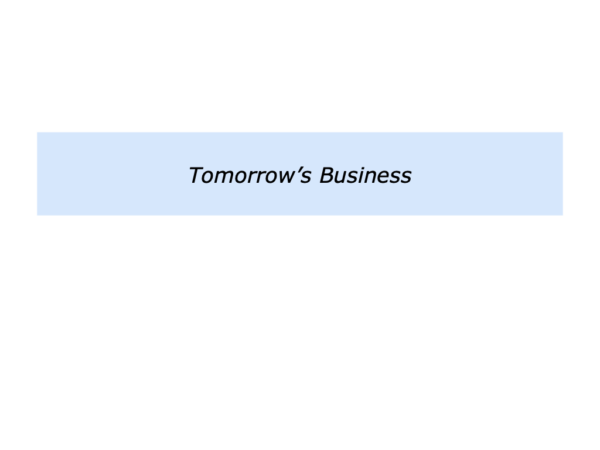
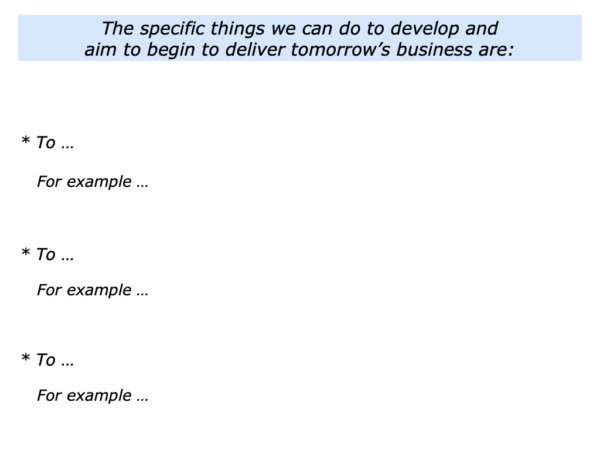
Each person went into the group that focused on the area they wanted to cover. The two groups did the exercises, brainstormed ideas and settled on several practical suggestions. They presented these back to the whole team where the ideas were discussed.
The leader then explained the next steps. This would involve clarifying the specific ideas to be implemented and translating these into clear action plans.
This step would also involve having mission holders who would ensure that the ideas got implemented. This would be a vital step in delivering the goods.
Good teams make sure they have mission holders. Here are some of the characteristics demonstrated by such people.
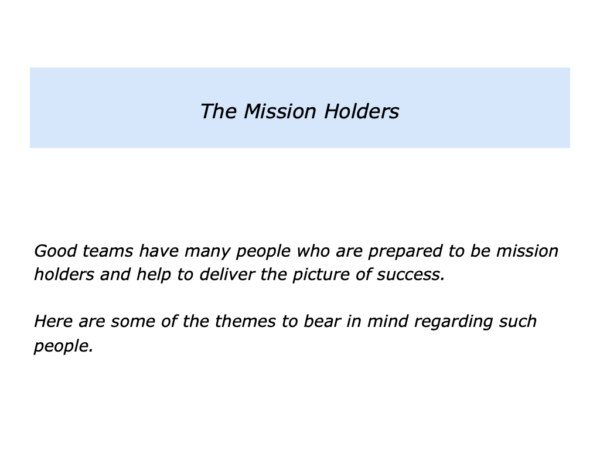
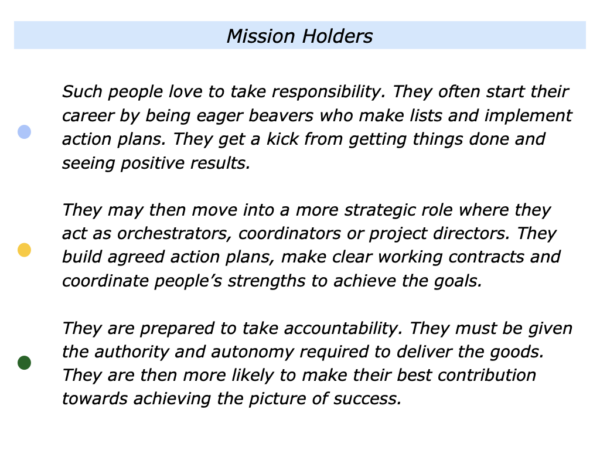
The leader then described the action planning process in more detail. They explained this in the following way.
Thank you for your ideas. Looking at these, I would now like to work with you on making action plans for delivering today’s business and tomorrow’s business.
When doing this we will take the following steps. I will also be working with you on making these happen.
First, I would like each of you go to the area you are interested in and are also are prepared to help to deliver. So you can choose again whether you volunteer to focus on today’s business or tomorrow’s business.
Second, I will work with each of these groups to agree on: a) the specific things we will focus on to deliver today’s business and tomorrow’s business; b) the specific actions plans for making these things happen.
Third, I will then ask for volunteers who are prepared to act as mission holders who take responsibility for making sure these things happen.
The mission holders will have my full backing. They will be given the required support and empowered to create task forces of volunteers who are prepared to implement the action plans.
The leader gave people a few minutes to decide which area they wanted to focus on – today’s business or tomorrow’s business. This involved a bit of toing and froing but eventually people settled into their groups.
The leader then spent a few minutes with each group to agree on the aims for the session. They described:
The key themes they definitely wanted people to focus on when producing action plans;
The freedom that people had to, if they wished, add other themes when producing the action plans;
The specific kind of action plans they wanted people to produce and also the mission holders for each theme.
The leader kicked off each session in the groups before settling in a place where people could find them if required. People got on with the tasks. They also occasionally with the leader that they were on the right track.
People did the work and then presented back their action plans. Here is the framework they used.
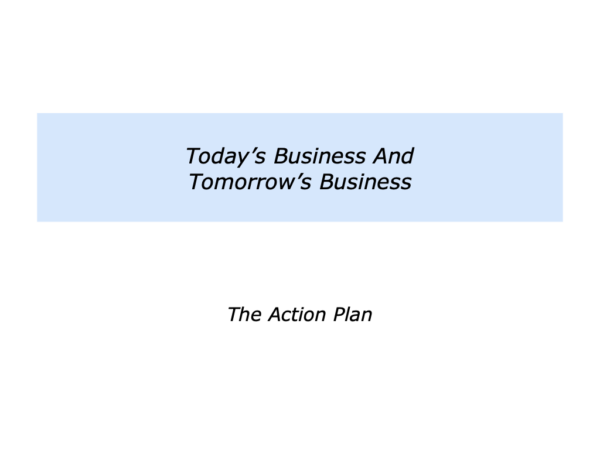
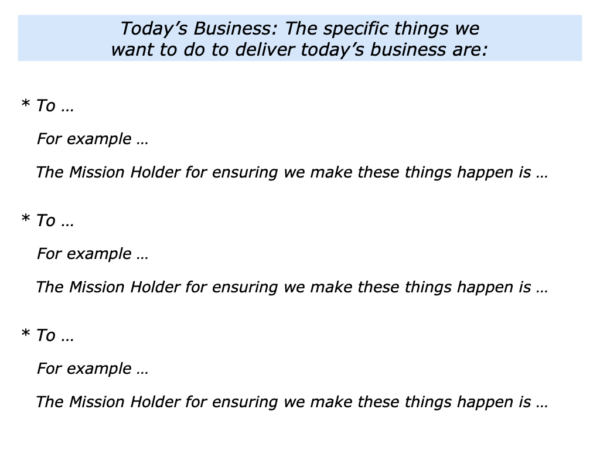
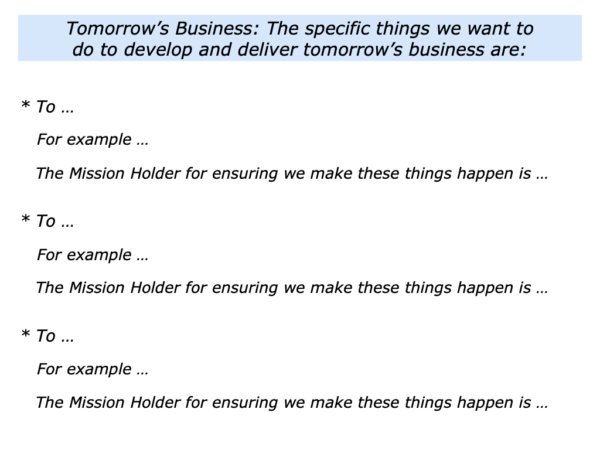
The leader then held meetings with each of the mission holders. These sessions covered the following areas:
The specific support the mission holders needed to implement the plans successfully;
The specific ways the mission holders would proactively keep the leader informed about the progress being made towards achieving success;
The specific other topics the mission holders wanted to discuss that could help them and their task forces to achieve success.
The team implemented the ideas, got some quick successes and achieved many of the goals. They then followed a similar process each year to help it to achieve ongoing success.
Imagine you lead a team. If appropriate, how could you follow elements of this approach in your own way? If you wish, try tackling the exercise on this theme. This invites you to complete the following sentences.
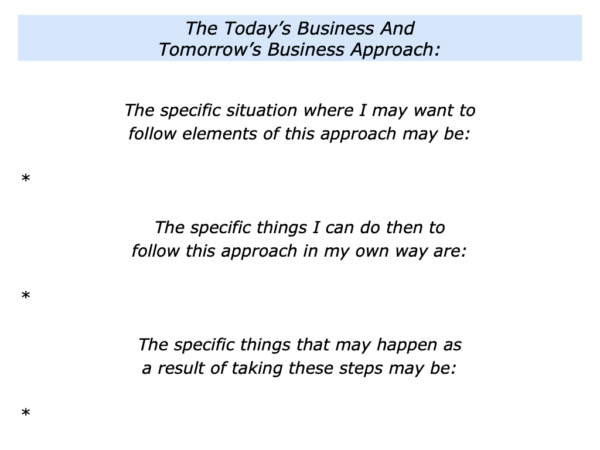






Leave a Reply